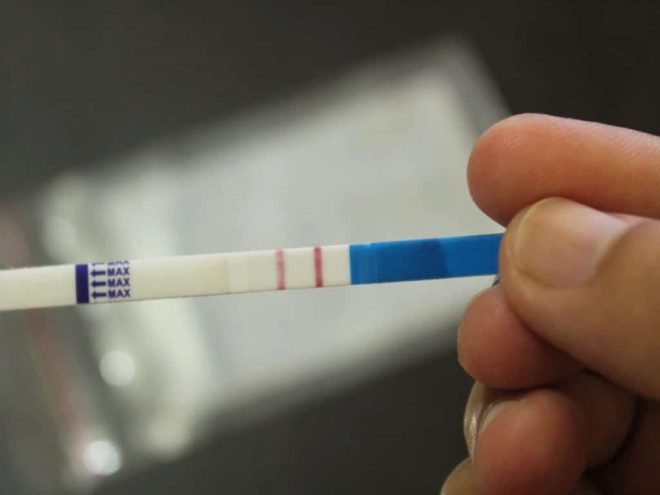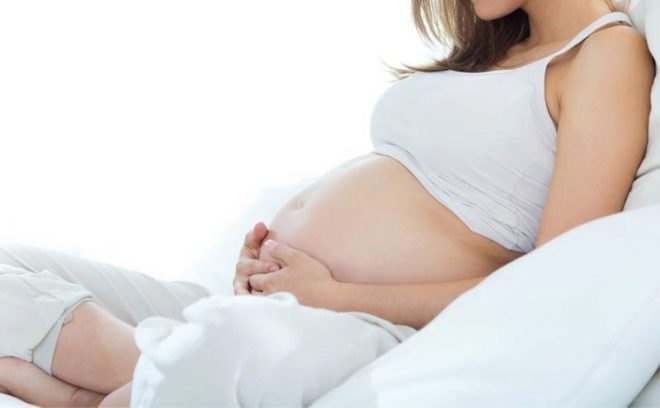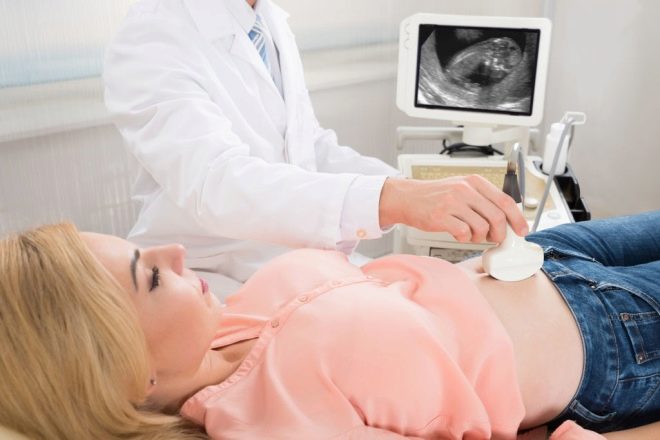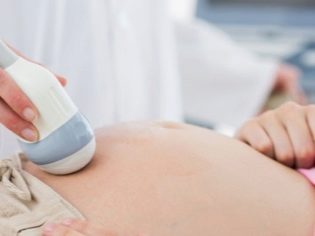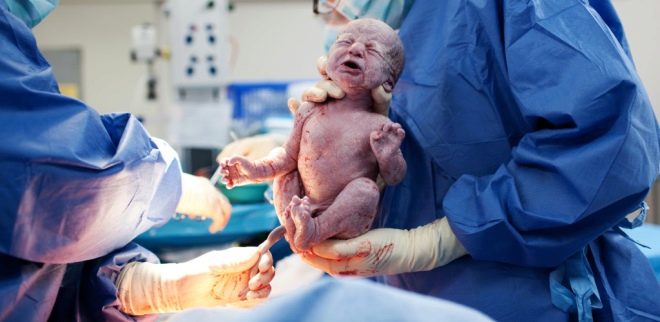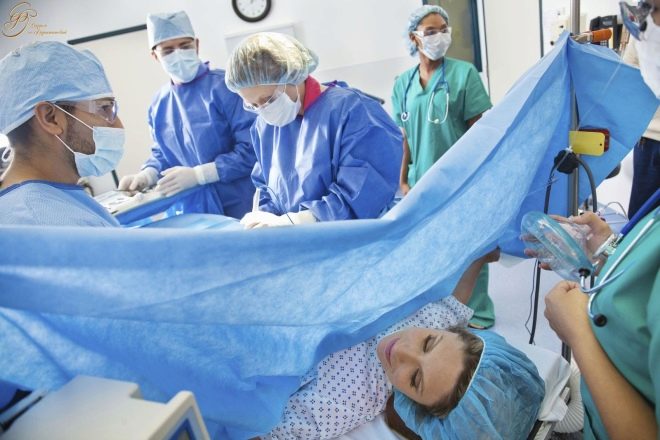Features of pregnancy within a year after cesarean section
Caesarean section - a serious operation, abdominal. After it, the female body necessarily takes time to recover, and the next pregnancy, which comes too early after surgery, can be a serious problem. Doctors do not advise getting pregnant earlier than two years after surgery. But life is beautiful and monstrous precisely because of its unpredictability, and within a few months a woman can see two strips on a test. What to do in this situation, for what possible difficulties need to be prepared, we will tell in this article.
Why is it necessary to be protected?
The need for contraception for two years is physiologically determined. If recovery after normal delivery proceeds more quickly, then after surgery it takes time to restore the damaged tissues of the uterus.
The scar on the reproductive organ is formed according to its own laws, and if the external sutures heal in a month, then everything happens inside completely differently. The edges of the wound on the uterus stick together by the end of the first day after delivery in the operating room. This helps them fibrin, which is converted into threads and provides tissue adhesion. In the following days, the development of new cells begins - myocytes, which should replace those injured during operative delivery. Gradually, new cells will begin to produce collagen, the scar will acquire elasticity.
If some negative factors interfere with the healing process - an inflammatory process after surgery, immune suture rejection, poor uterine contractility, the process of myocyte production may be impaired, and many connective tissue that is unable to stretch will appear in the scar area. The scar is formed inelastic and untenable.
The whole process of scarring takes about two years, That is why doctors call this term as a restriction for re-conception. In addition, the endocrine system must be fully restored, the reserves of blood lost during the operation and the rehabilitation period must be replenished, and the ovarian function restored. Endometrium - the inner layer of the uterus, which is extremely important for the implantation of the embryo, must restore integrity after surgery, in which it was damaged when the placenta detached and during hysterotomy (dissection of the uterine wall).
Pregnancy is previously undesirable due to the fact that A tired female body that has not recovered may not provide the developing fetus with everything necessary. A scar on the uterus, not completed the formation, can not withstand the stretching and rupture even in the process of gestation. The rupture of the reproductive organ along the scar is an extremely dangerous condition in which the death of both the mother and the fetus is not excluded.
The failure of the endometrium and scar together create the risk of miscarriage, and sometimes the entire pregnancy, if it occurred earlier than the recommended time, may be accompanied by a threatening condition. Often, the placenta on the thin endometrium is fixed below the safe level, it is also possible that it will grow into the scar, and then the uterus can not be saved after the second operation, it will be removed.
During pregnancy with such introductory data, children often experience hypoxia, vitamin deficiencies and nutrition due to placenta malformations, blood flow disturbances in it, and intrauterine growth retardation is often recorded.
What to do if conception has come?
Considering all the dangers and risks of early pregnancy after cesarean section, a woman has to make a very difficult decision - to keep the pregnancy or have an abortion. Both are equally risky. After an abortion, which took place 2-3 months after cesarean section, the reproductive system will receive a terrible blow, and the endometrium and scar after curettage will be significantly affected. In the future, the scar may be untenable, and the likelihood of secondary infertility is also high.
Save pregnancy is a solution that is associated with other risks - miscarriage, miscarriage, missed abortion, pathology of the fetus and placenta.
It must be emphasized that The decision should be made only independently and only after careful weighing of all the pros and cons. The majority of doctors in antenatal clinics in such situations attempt to dissuade patients from maintaining pregnancy. Do not think that the doctor is just scary. There are risks in any case, and they are quite high. And the task of the doctor is to convey to the patient information about all possible options for further developments.
A woman who decides to save the child is automatically included in the risk group. Behind her will be a special control, she will be more likely to visit the doctor than other pregnant women, examinations, she will be given more tests.
It is possible that for any reason, with minor deviations in tests or in the results of ultrasound, a pregnant woman will be hospitalized. Some will have to spend on strict bed rest almost the entire pregnancy.
Course of gestation
Of course, much depends on how much time has passed after the operation, before the woman became pregnant. If more than 8-9-10 months, the prognosis is more favorable than if the pregnancy occurred 4-5 months after cesarean section.
In any case, at the very beginning it will be necessary to clarify where the baby is fixed in the uterus. If the embryo was implanted in the scar tissue in the postoperative zone, then, to save the pregnancy, alas, will not work. Scar tissue is not rich in blood vessels, and therefore the development of the fetus in it is absolutely impossible.
When registering a woman must spend an ultrasound. It will differ from the usual one in that the specialists will pay the closest attention not to the baby, but to the inner scar zone. Its thickness will be measured. This is important for predicting the behavior of the scar in the future.
When a scar is detected, the woman will again be asked to choose whether to keep the pregnancy or have an abortion. Thin and heterogeneous scar in conditions of intensive growth of the uterus during pregnancy - a great danger to her life.
In the first trimester of pregnancy, the scar will be examined only 1-2 times, but after 6 months of pregnancy, his condition will be monitored at least once every two weeks, and then once every ten days.
The third or fourth pregnancy that occurs too early after the previous one is considered the most dangerous. With each subsequent operation, the uterine scar is subject to excision during labor, and therefore it becomes more and more delicate. The risk of uterine rupture increases with each subsequent pregnancy, and even if it is premature, then even more so.
Despair, however, is not worth it. And these kids can successfully make, provided that the woman will comply with all the recommendations of the doctor strictly.
All other studies - prenatal screenings, mandatory woman tests will take place, like all the others, in a general time frame.
Childbirth - time, method
Pregnancy during the first year after the postponed surgical delivery not only relates to a high risk group during gestation, but is also considered the same from the point of view of planning labor activity.
The second child after the first cesarean is sometimes allowed to give birth on their own. But if a woman became pregnant before the last 2 years, in 99.9% of cases, independent delivery will be categorically denied. A thin scar will be a great "well done" if it provides for the carrying of the fetus. Requiring him elasticity and strength with strong labor pains would be too great a risk. The uterus can rupture in labor.
Such a contraindication is provided by the clinical guidelines of the Ministry of Health of Russia. But, in the opinion of women, there are paid clinics in the country that are ready to undertake the management of natural childbirth with a thin scar on the uterus. In childbirth in this case the use of drugs to stimulate labor is strictly prohibited. And with the weakness of labor or protracted labor, as with any risk of a rupture of the reproductive organ, the woman undergoes an emergency caesarean section.
Most hasty pregnancies give birth through elective surgery. Assign it after 37-38 weeks of pregnancy. If the thickness of the scar allows, then try to keep the pregnancy to 38.5-39 weeks.
Such pregnant women are hospitalized a week and a half earlier in order to closely monitor the slightest changes in her condition. It is important to prevent the onset of self labor and to perform an operation on the relaxed, calm muscles of the uterus.
On the healing of the uterine scar after cesarean section, see the next video.

